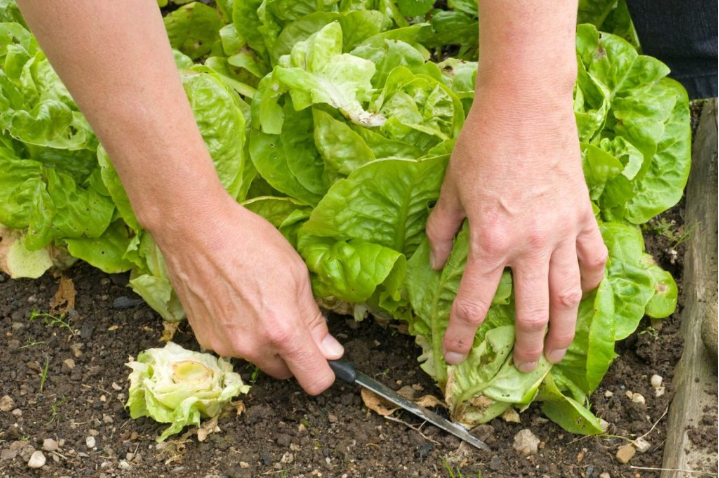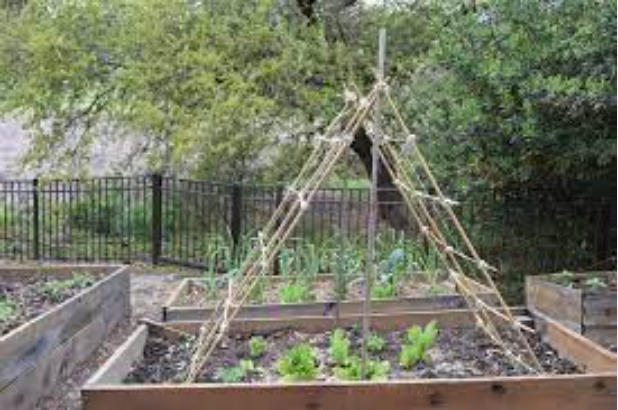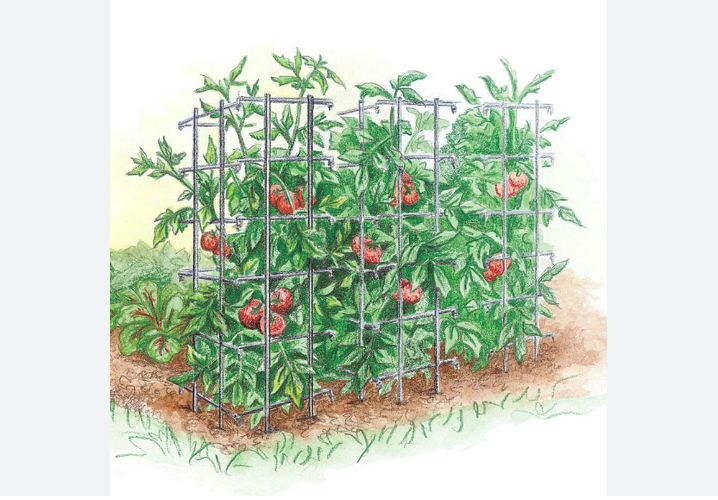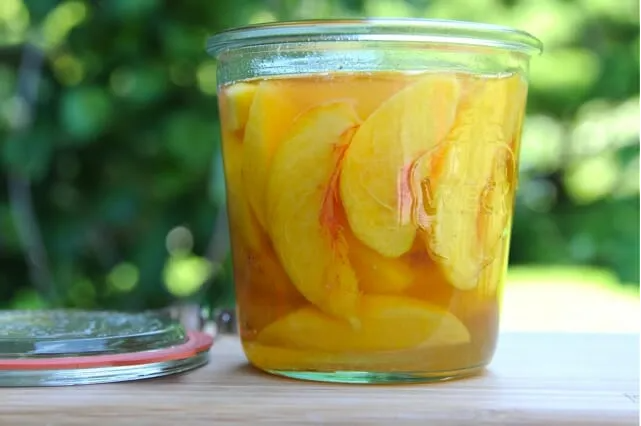How to Harvest Lettuce? Introduction
Harvesting Lettuce is the most critical part of a gardener’s life. The timing of harvesting matters a lot, as a slight misjudgment while harvesting lettuce may leave permanent negative marks on your plant. If you are harvesting early, lettuce will be underdeveloped. While a little later harvesting can cause lettuce to be tough, and bitter. The exact time of harvesting will give the best taste, texture, and color. You only need a little attention to detail to learn the precise harvest time.
We know having lettuce at home has many benefits. It is a lot fresher than the ones you get from the market. The natural vitamins and nutrients are intact in homegrown lettuce since it doesn’t travel miles to your plate. Also, growing lettuce at home will save your food from all the harmful pesticides and medicines. Lettuce is an easy-to-grow vegetable at home. Eating homegrown food is an accomplishment that you can only feel upon achieving it. No matter if you have a garden or containers, you can grow lettuce. All you need to know is how to pick lettuce.
How to Harvest Lettuce? The Ideal Harvesting Time
Knowing the types of lettuce is crucial. This information will act as a baseline for learning when to harvest lettuce. There are many types of lettuce available for your garden, and each has its harvesting time.
Romaine Lettuce
Romaine Lettuce is famous as Cos Lettuce. This Lettuce has a crunchy texture on its leaves that are long and sturdy. Cos Lettuce is famous for sandwiches and salads. If you are planting Romaine, set the harvest date after 70-75 days of planting. This period is enough for the plant to be mature enough and ready for harvesting lettuce. If you are wondering, how to harvest romaine lettuce, it is an easy process. Once you see the outer leaves reaching a usable size, pick them individually. If you want to wait a little longer, cut the head once the lettuce reaches mature size.
Butterhead Lettuce
Butterhead lettuce has two varieties, Boston and Bibb. This type of lettuce has a loose head and buttery leaves. Also, the tender texture and mid-flavor are its specialty. The ideal time to harvest the butterhead lettuce is 55-75 days after planting. As the leaves form a loose rosette, you can harvest the whole head.
Iceberg Lettuce
Iceberg Lettuce is known for its round heads that are dense and crisp. This type of lettuce is best in Salads and for garnishing. You can harvest iceberg lettuce 75-90 days after planting. Check and see if the heads are tightly packed and firm. This point is ideal for harvesting lettuce.
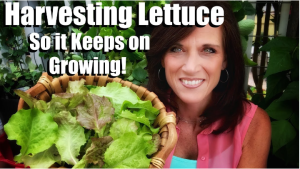
how to harvest lettuce
Leaf Lettuce
Leaf lettuce is available in many varieties such as red leaf, Oak leaf, and green leaf. This type has tender leaves without a head. If you want a fast-growing lettuce in your garden, get the leaf lettuce. The usual harvesting time is 30-45 days for leaf lettuce. During this time, the leaves will get large enough to eat. You can pick the individual leaf or also harvest the plant itself.
How do I prepare for Harvesting Lettuce?
To get the best results, you need to plan before harvesting Lettuce. Instead of wondering how to harvest lettuce, we should get the best tools and prepare for harvesting.
Tools Needed for Harvesting
You will need a few tools as you decide when to harvest lettuce. These tools are as follows.
- Sharp Knife for cutting the lettuce cleanly without damaging the plant
- Garden Gloves for keeping your hand safe from dirt or insects.
- Harvesting bucket to transport the lettuce without damaging the leaves.
- Gardening hose, to rinse the freshly harvested lettuce from pests and soil.
- Ice packs to cool the lettuce during warm temperatures during transporting lettuce.
How to harvest Lettuce? Garden Preparation
After you have all the tools, it is time to prepare your garden or soil for harvesting. This way you won’t have to wonder how to cut lettuce from the garden. Complete the following steps to ensure that the soil is ready to harvest lettuce.
Soil Moisture
Your soil should not be waterlogged or completely dry. There should be a little moisture in the soil. Moist soil is the best when you are attempting to harvest the lettuce by completely pulling the plant out.
Inspection
Now inspect the plant and check for diseases or pests. If you see the leaf of the plant being affected by the disease, remove it from the plant. Afterward, check for debris and weeds around the plant. It is best to remove the unwanted debris. Thus, once you attempt to harvest the plant, you won’t get any resistance.
Planning
After completing both the initial steps, we’ll now have to plan the harvest. In this step, we’ll need to plan the harvesting. We can harvest the entire plant or remove a few of the leaves. For the best growth, start from the outer side and harvest a few leaves. As you are harvesting lettuce, keep a bucket ready under a shade. This way, you can save the leaves from getting unwanted sunlight and heat.
How to check if the lettuce is ready for Harvesting
We are stressing again the importance of harvesting time. So, our hard work gives us the best results. Thus, we need to ensure that we are keeping an eye on a few indicators before harvesting lettuce.
Texture
Check the texture of lettuce leaves as they should be tender and crisp. If the leaves have a thicker stem or show other signs of bolting, avoid harvesting them. But, if feel slight firmness while touching the leaves, it means they are ready for harvesting.
Color
The color of lettuce leaves is also an indicator of harvesting. The color should be vibrant and consistent. If you have planted a red variety, look for a reddish, rich tone. While for the green variety, check for a deep green hue.
Size
When you feel the leaf’s size is mature enough, it is ready for harvesting. If you have iceberg and romaine varieties, the leaves will be full and firm. For the leaf lettuce, the leaves should be 4-6 inches in length, and ready for harvesting.
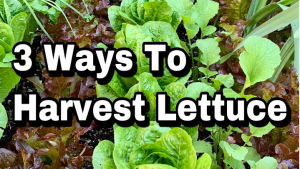
harvesting lettuce
What is the ideal weather for Harvesting?
After checking the visible indicators, we must check the weather conditions. They should be as per the following standards.
Cool Temperature
Lettuce feels the best when the temperature is cooler. So, as you are planning to harvest, ensure that you are starting the process in the early morning or during the evening. Harvesting in cooler temperatures will keep the leaves fresh and crisp.
Avoid Wet Conditions
We know moist soil is the best for harvesting. But as you wonder about how to harvest lettuce, avoid it after heavy rain. When the lettuce leaves are wet, they are prone to damage and injuries. If you feel necessary, gently remove the excessive water from the leaf. Ensure that the leaf is dry enough before harvesting.
Stable Weather
The weather on the day of harvesting should be stable and moderate. Avoid harvesting in cold or hot weather. The sudden changes in weather conditions may affect the quality of lettuce.
How to harvest Lettuce?
Now we have covered all the tracks and checked the suitable conditions, let’s learn the ideal methods that can teach us how to harvest lettuce. The perfect goal of harvesting is to ensure that we don’t damage the plant or leaf. Following are some effective harvesting techniques.
Harvesting Baby Lettuce
If you are looking to harvest the baby greens, cut them 1-2 inches above the ground. Make sure that the leaves are tender and young when you are cutting them. This early harvesting helps the regrowth of lettuce plants.
Outer Leaves Harvesting
To extend the harvesting period in leaf lettuce and butterhead, pick the outer leaves. Use scissors to pick the out leaves and gently cut the leaves. As you are cutting them, make sure that you are closer to the base of the leaf. This way you will keep the inner leaf intact for regrowth.
Cutting the heads
Use a sharp knife for the varieties like an iceberg and Romaine to cut the head. While cutting the head, make sure you are placing the knife at the base of the leaf. Ensure you are cutting the head in a single attempt to avoid crushing the stem. You should only attempt this method when the head of the plant is ready for harvesting.
What are some tips to avoid plant damage?
When the new gardeners are harvesting the plant, the chances of damage to the plant are higher. Use the following tips to avoid plant damage during harvesting.
- Avoid using dull tools while cutting the leaves of the plant. Dull tools can easily crush the leaves. Use a sharp knife or scissors for harvesting.
- As you are handling the leaves, be gentle to avoid any bruising. Bruises can spoil the leaves, thus affecting the overall quality of harvesting.
- In case your plant or any part of the plant has disease, harvest it during dry conditions. Dry conditions will prevent the disease from spreading to other parts of the plant. We plants are more prone to damage.
- While cutting the leaves, leave a small portion of the stem, especially for the baby greens.
- Lastly, harvesting at a cooler time is recommended. This helps the leaves of the plant to keep their crispness intact.
How to harvest Lettuce? Post Harvesting Techniques
Our primary goal while harvesting is to keep the lettuce crisp and fresh for a long time. Follow a few standard steps to get the best results after harvesting the lettuce.
Washing and Drying
Rinse off dust and debris from the leaves gently by using clean water. Also, ensure that the water you are using should be cold. This process is required immediately after harvesting the lettuce.
Now take a bucket or use your kitchen sink and put the lettuce in the cold water. The water should fill up the bucket or the container. Now, stir up the water in a gentle way. This process will remove any pests or soil on the lettuce. Leave and soak the lettuce in cold water for a few minutes. These extra few minutes will ensure a thorough cleaning.
After the thorough cleaning, remove the lettuce from the water and wait for a few minutes. Afterwards, put the lettuce under the cool water but this time make sure that the water is running. Running water will remove any residuals of dirt from lettuce.
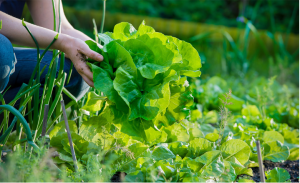
how to pick lettuce
In the last step, we need to make sure that the lettuce is dry. Excessive water can damage the leaves. Thus, use a Salad spinner gently to dry the lettuce. If you don’t have a gadget, manually shake the lettuce without applying too much force. You can also use paper towels or kitchen towels as well.
How can I store the Lettuce?
- Since we have learned how to harvest lettuce, we move toward the last step. Once we go through the after-harvesting process, we’ll need to store the lettuce. Take a damp paper towel or a plastic bag and put the lettuce inside. This wrapping technique will help you keep the lettuce moist in the refrigerator. Also, the process will stop lettuce from becoming extra wet.
- The temperature of your fridge should be between 32°F and 40°F (0°C and 4°C). This setting will help you maintain a fresh flavor and feel in the lettuce. Keep the lettuce in the middle of the fridge to provide a constant temperature.
Take more than a single container or a bag if you have a large quantity of lettuce. Overcrowding in a single container can also bruise the leaves.
More info: Expert Tips on When to Harvest Potatoes 2024
FAQs
Here are the few commonly asked questions about Harvesting Lettuce.
1- What is the best time to harvest lettuce?
Try to harvest lettuce early in the morning or during the evening. The weather should be cooler when you are harvesting lettuce.
2- Do I need any tools while harvesting?
Use a sharp scissor or knife, garden gloves, a container, a garden hose, and ice packs.
3– How to see if Lettuce is ready for Harvesting?
There are indicators on every lettuce that tell you about harvesting time. If you have head lettuce, the head should feel firm. While for mature lettuce, the color should be vibrant and crisp.
Final Thoughts
We now understand that harvesting lettuce isn’t a difficult process. Also, lettuce is the easiest to grow vegetables in your garden. We can head to the nearest grocery store after reading this info and have ourselves a great lettuce crop in our garden.

